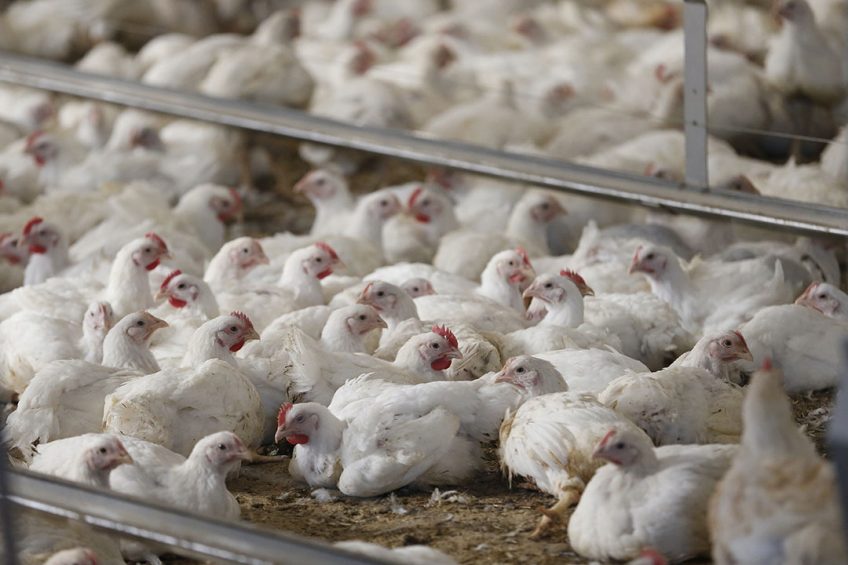Dietary phytase reduces broiler woody breast severity

The inclusion of phytase enzymes in the feed can have a positive effect on wooden breast development.
Potential modulation of breast muscle fatty acid profiles reduces the severity of the myopathy which often leads to meat condemnation. In 2014, the first publications appeared which described ‘woody breast’, a condition of broiler breast muscle characterised by visually hard, outwardly bulging and pale areas on the ventral surface of the pectoralis major muscle. Woody breast is now one of the most important myopathies challenging the poultry industry. It is of global concern, with incidences reported to affect 30-50% of broilers growing for 8 weeks to a live body weight of over 4.2kg. The myopathy constitutes a major animal health, welfare and economic concern causing enormous financial losses to the industry due to on-farm culling and mortality, downgrading, and condemnation at processing, as well as rejection from human consumption.
Preventing hypoxia
The aetiology of the myopathy is still unknown, however, histological evidence of the haemorrhagic lesions indicates multifocal degeneration and necrosis of muscle tissue with infiltration of inflammatory cells, connective tissues and fat. Evidence is provided in the literature that woody breast myopathy is associated with systemic and local breast muscle hypoxia. Dietary supplementation with phytase reduced its severity. Dietary phytase enzyme is accepted in practice for the intestinal degradation of plant phytate and improvement of phosphorus digestibility and feed efficiency, but has also been shown to modulate oxygen-homeostasis-related pathways. Hypoxic conditions have been reported to limit the regenerative capacity of muscle fibres by favouring the replacement of degenerated muscle fibres with lipid and fibrotic tissues.
High doses of phytase
It has been suggested that woody breast is associated with lipid dysmetabolism, The present study was undertaken to determine the effect of dietary phytase on woody breast and breast muscle fatty acid profiles. The experiments involved male broilers subjected to 6 treatments, including 3 levels of dietary phytase supplementation (500, 1000, 2000 FTU).
 Evaluation of meat from slow-growing broilers
Evaluation of meat from slow-growing broilers
It is believed that by growing chickens in a semi-intensive system and giving them more time to attain maturity, muscle abnormalities in slower growing chickens might be reduced.
Woody breast and white striping scores were recorded, and fatty acid profiles were determined using gas liquid chromatography. The fatty acid profile in the breast tissue of woody breast-affected birds had a significantly higher percentage of saturated fatty acids and a lower content of polyunsaturated fatty acids. Dietary phytase in high doses (1000 and 2000 FTU) significantly reduced the percentage of saturated fatty acids and increased that of polyunsaturated fatty acids compared with the control group. As woody breast myopathy seems to be associated with an imbalance of the fatty acid profiles, the supplementation of dietary phytase ameliorates its severity through modulation of saturated fatty acids and polysaturated fatty acid content.
Authors: Reagan Cauble, Elizabeth Greene, Sara Orlowski, Carrie Walk, Mike Bedford, Jason Apple, Michael T. Kidd, and Sami Dridi, Poultry Science












